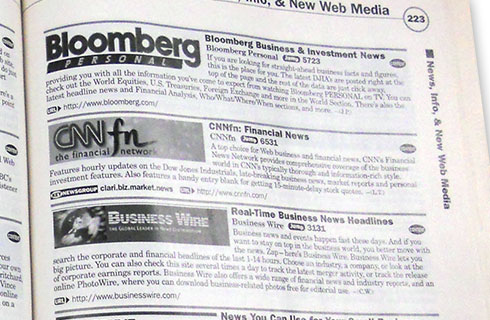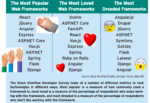My husband kept this book because he thought it looked useful at the time. Now, it is best used to blow the minds of the millennials here at BZ Media. Organized in categories such as “Consumer/Business, & Self Help” and “Science/Education/Technology,” a guide for finding information on the Web seemed like a good idea at the time. How else would you know what was out there on the Internet?
Now gather ‘round, children… When I logged into AOL with my dial-up 14.4 fax modem, it took 45 minutes for a Web page to load. I needed to be sure that The New York Times had a website. The struggle was real!
This handy reference book, published in 1999 by Internet Media Corporation for Sony WebTV users, is a mere half-inch thick at 394 pages. And, according to the cover, people may have paid US$23.95 for it. I suppose that as the Internet exploded, this book and others like it (in paper!) quickly became impossible to update and not feasible to publish. With digital content growing exponentially, imagine how thick this book would be today.
This book is also a great example of how differently we consume information today. At the start of the Internet as an everyday consumer tool, people were still comfortable with books they could touch and feel. The approach to distributing this information was not even through a clickable e-book. Today, my children prefer screens to books. They read so much content online, I hate to remind them that they are still, in fact, actually reading.
So when you nag your spouse about why they can’t seem to throw anything away, wait 20 years or so. The stuff you find in your basement may be pointless, but it may also have historical significance. Or, at least, entertainment value.







